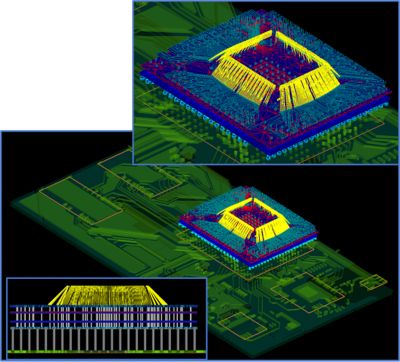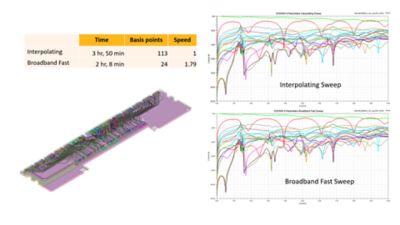-
-
Software gratuito per studenti
Ansys potenzia la nuova generazione di ingegneri
Gli studenti hanno accesso gratuito a software di simulazione di livello mondiale.
-
Connettiti subito con Ansys!
Progetta il tuo futuro
Connettiti a Ansys per scoprire come la simulazione può potenziare la tua prossima innovazione.
Paesi e regioni
Customer Center
Supporto
Partner Community
Contatta l'ufficio vendite
Per Stati Uniti e Canada
Accedi
Prove Gratuite
Prodotti & Servizi
Scopri
Chi Siamo
Back
Prodotti & Servizi
Back
Scopri
Ansys potenzia la nuova generazione di ingegneri
Gli studenti hanno accesso gratuito a software di simulazione di livello mondiale.
Back
Chi Siamo
Progetta il tuo futuro
Connettiti a Ansys per scoprire come la simulazione può potenziare la tua prossima innovazione.
Customer Center
Supporto
Partner Community
Contatta l'ufficio vendite
Per Stati Uniti e Canada
Accedi
Prove Gratuite
ANSYS BLOG
February 1, 2022
Ansys HFSS 2022 R1: Accelerating Design in Autonomy, 5G, IoT, and More
When you’re determined to capture your market with cutting-edge electromagnetic (EM) technology for autonomy, 5G, and IoT products, there’s no time for spinning your wheels. You need acceleration, which is exactly what the new features in Ansys HFSS 2022 R1 deliver.
The HFSS name is synonymous with simulating high-frequency electronic devices, with its technology applied across a huge set of products and applications.
Of course, being the standard bearer means never standing still. To give designers and engineers the tools to tackle new problems and speed time to market for their own groundbreaking technology, Ansys is continuously improving and expanding the capabilities of its software solutions.
With HFSS 2022 R1, Ansys is overcoming challenges associated with automotive radar simulations and core meshing, plus adding new broadband frequency sweep technology to deliver the same reliable HFSS answers, even faster than before.
- The patent-pending Automotive Radar Surface Roughness Model enhances the ability of HFSS SBR+ to represent real-world effects on range doppler images from road surface roughness.
- HFSS 3D Layout users will be able to solve complex and large-scale EM system designs with the Phi Plus Mesher in the HFSS Mesh Fusion Workflow.
- Broadband Fast Sweep speeds up the extraction of broadband frequency sweep results by reducing the number of explicitly solved frequency points required to generate the sweep.
Incomparable Accuracy and Speed
Training machine learning (ML) algorithms for advanced driver assists systems (ADAS) requires massive amounts of data. Simulation promises to deliver the necessary quantity in the most scalable fashion possible. However, the ML algorithms need data that represents the environment as close to real life as possible.
Until now, though, it’s been difficult to efficiently depict the signature of road surface roughness in the automotive radar scene. Modeling road roughness explicitly requires geometric descriptions of the road surface — at considerable computational expense. Without including a model of the surface roughness effect, the radar simulation signature return is overly optimistic, which inhibits the development of realistic target identification algorithms.
The new Automotive Radar Surface Roughness Model in Ansys HFSS SBR+
The Automotive Radar Surface Roughness Model in HFSS SBR+ enables designers and engineers to understand road roughness signatures and its impact on automotive radar scene simulations. It provides realism, accuracy, and speed in a single solver package.
Solving the Unsolvable
Meshing is always a challenge, but is critical to delivery of accurate and reliable solutions. For the electronics industry, the unprecedented complexity of systems — hundreds of objects, layered structures combined with 3D entities like wirebonds, and countless electromagnetic interactions all within a smaller package composed of smaller features — makes meshing even more daunting.
To simplify the meshing process, increase capacity, and reduce solution time, Ansys has integrated the Phi Plus Mesher into the HFSS Mesh Fusion Workflow. The combination enables faster and more robust meshing, particularly for signal and power integrity and for integrated circuit (IC) and 3D-IC design.
The Phi Plus Mesher, introduced in Ansys 2021 R2, is a high-performance computing (HPC)-enabled, CAD-aware parallel meshing technology that is optimized for mixed electrical/mechanical designs. It uses local knowledge of the geometries to perform locally optimized meshing approaches, with particular attention paid to meshing wirebond IC packages.

Phi Plus Mesher in the HFSS Mesh Fusion Workflow
Integrating the Phi Plus Mesher into the HFSS Mesh Fusion Workflow — a state-of-the-art workflow delivered with Ansys 2021 R1 that helps engineers predict EM interactions of ICs, packaging, connectors, printed circuit boards (PCBs), antennas, and platforms — enables engineers to solve complex and large-scale designs that could not be easily addressed previously.
Less Effort, Fewer Resources
HFSS simulation enables high-speed channel modeling to ensure signal integrity in the design of ICs, IC packaging, and PCBs. For engineers developing applications where the number of ports in the design is relatively small, Broadband Fast Sweep in HFSS provides faster solution results. This new technology produces a causal model with less computational effort and fewer computational resources, reducing simulation times and accelerating the design process.

Broadband Fast Sweep
Broadband Fast Sweep reduces the number of solved points required to generate signal integrity data by taking advantage of HPC resources to solve frequency basis points in parallel. In addition, it provides a more accurate results by minimizing impact of "solution noise" when compared to other fitting technologies like interpolation sweeps or adaptive frequency sweeps.
Be the Front Runner
HFSS reduces design cycle time and boosts your product’s reliability and performance. By solving more, larger and increasingly complex designs — and speeding time to solutions — Ansys HFSS 2022 R1 puts you even further ahead of the competition. And that’s what acceleration is all about.
Learn about everything in the new release of Ansys HFSS in this webinar: Ansys 2022 R1: What’s New in Ansys HFSS.
Ansys HFSS 2022 R1 is now available for download on the customer portal.